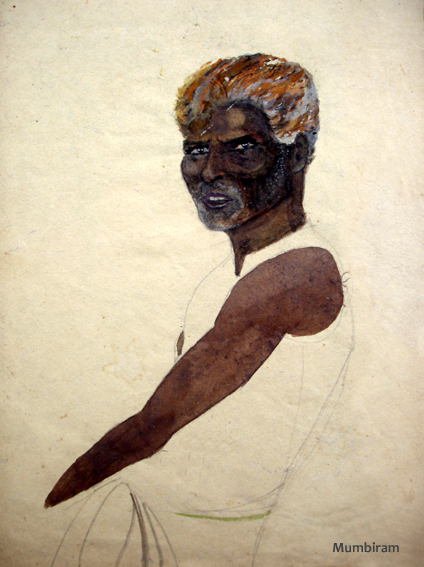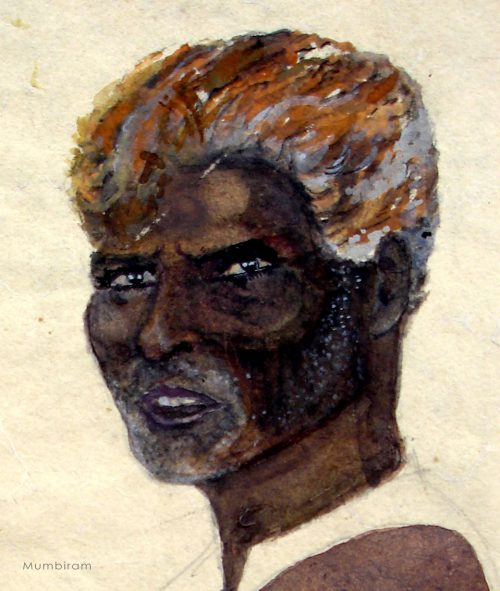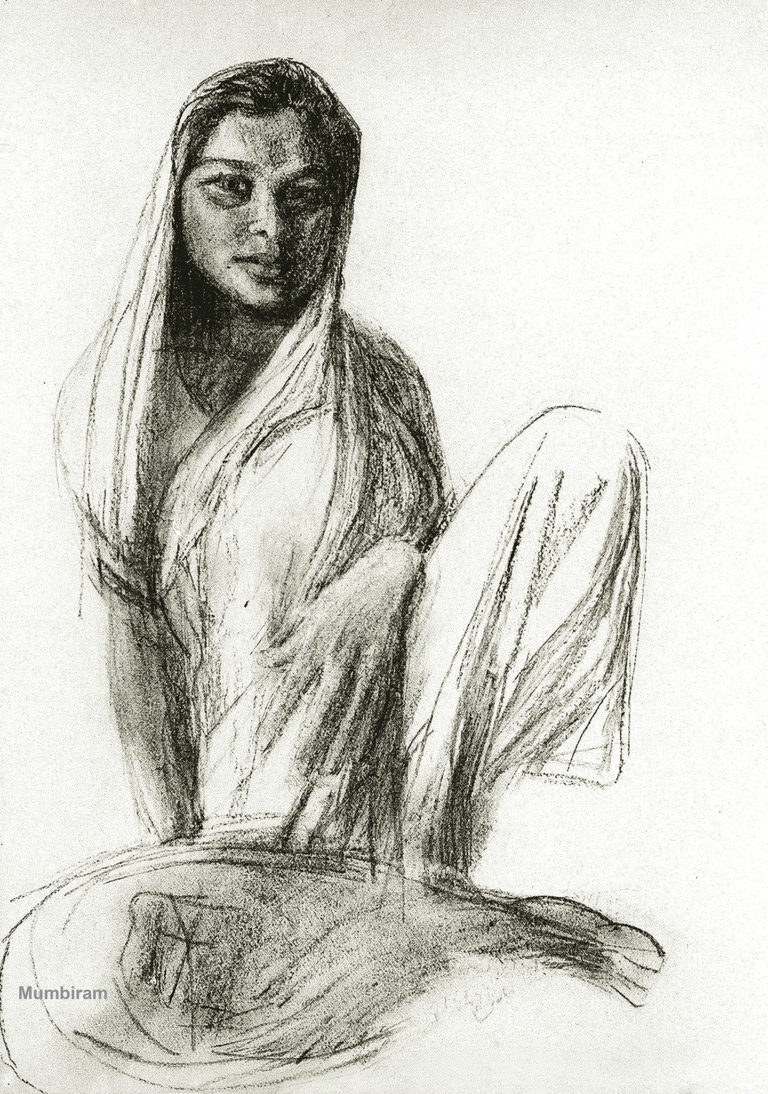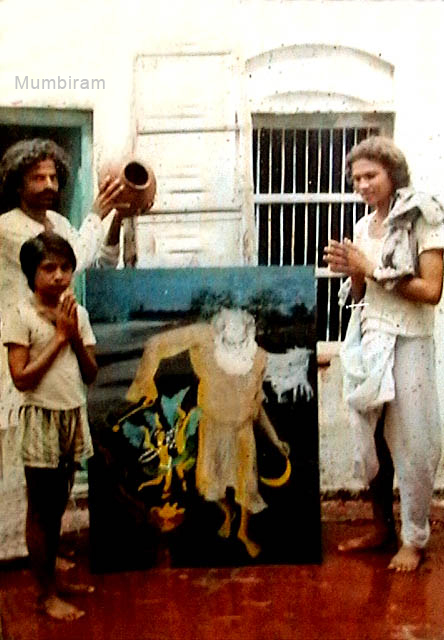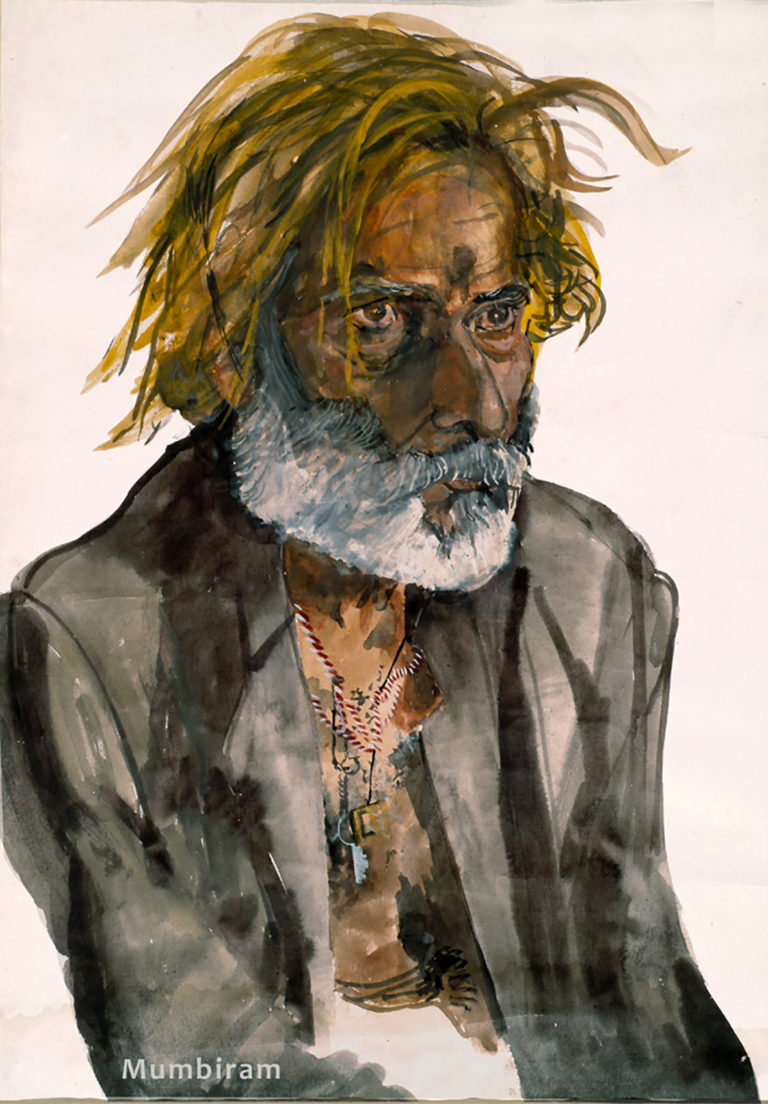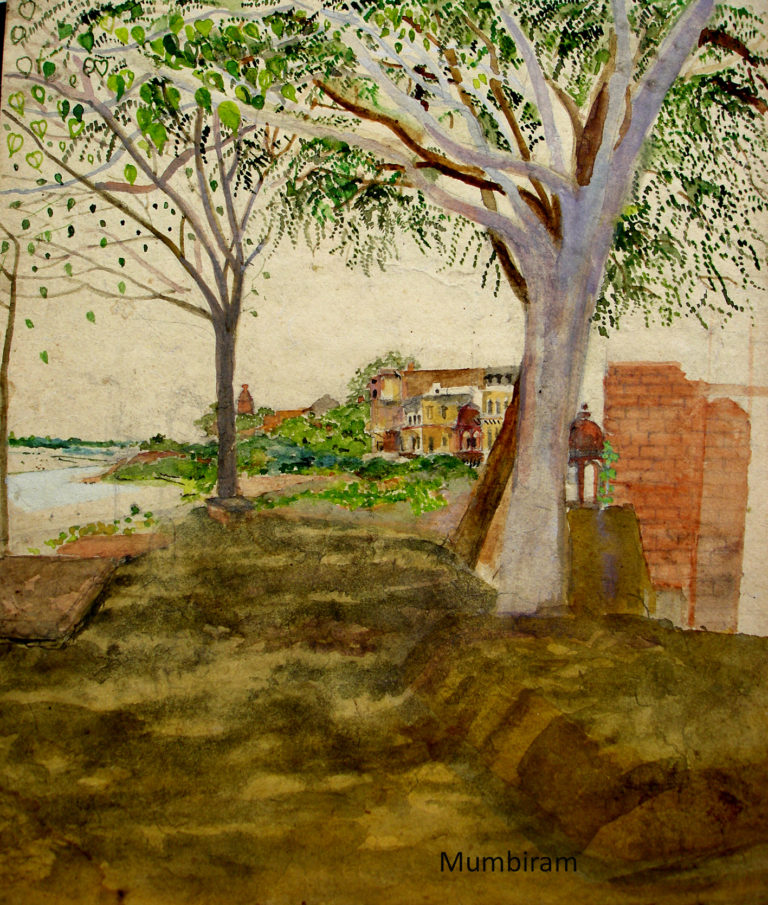During his walks through the winding by-lanes of Vrindavan Mumbiram became friends with a householder, named Shankar Pahilwan, who ran a chai-shop in the Athkhamba area in the old bazaar. Shankar Pahilwan had discovered and ‘inherited’ a hut on the sandy banks of the Yamuna. It had become a meeting place for independent seekers to commune and meditate. Mumbiram would spend long quiet afternoons in this hut reading and making sketches.
A Maharashtra devotee named Gaikwad was a frequent visitor. He sang devotional songs while playing tabla rhythms on the floor. Gaikwad nearly never talked otherwise. You would have called him eccentric. Nobody cared to nor did know much about him.
Artist Mumbiram found Gaikwad fascinating. He was a dark man with a lean but strong face with chiselled facial features. These attributes do not fit in the Indian stereotypes of male handsomeness. These are expected to be found in the lower caste working class men. In India a handsome man is expected to be well-fed and well-protected from the sun. But that was no ordinary place. It was the same manifest Vraja where Krishna appeared on our planet. It was the leela-sthali where Krishna Ghanashyam of the complexion like a dark blue cloud charmed everything and everyone with his handsome looks. It was bank of the Yamuna and it was association of devotees.
One afternoon Mumbiram began to make a miniature sketch of Gaikwad soon after Gaikwad arrived and took his usual singing position. Gaikwad did not mind. Before long Mumbiram had coloured it and completed it with great alacrity and aplomb.
